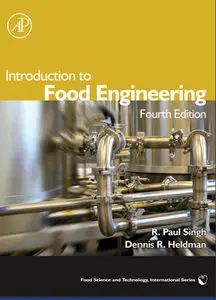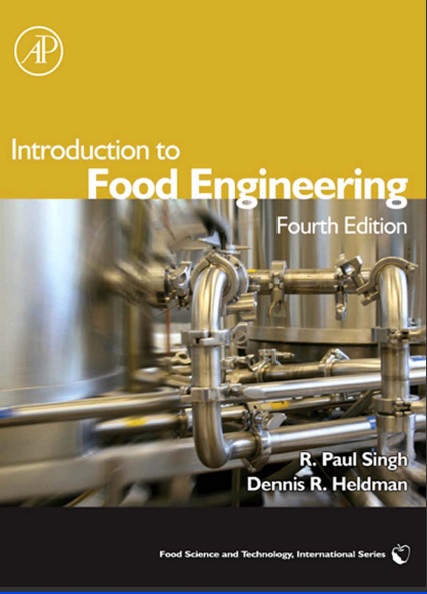Introduction to Food Engineering, Fourth Edition (Food Science and Technology) by R. Paul Singh, R. Paul Singh and Dennis R. Heldman
English | 4 edition (October 21, 2008) | ISBN: 0123709008 | 538 pages | PDF | 7,2 MB
English | 4 edition (October 21, 2008) | ISBN: 0123709008 | 538 pages | PDF | 7,2 MB
The fourth edition of this leading textbook presents the engineering concepts and unit operations used in food processing in a classroom-proven and unique blend of principles with applications. Describing the application of a particular principle followed by the quantitative relationships that define the related processes, each chapter also includes solved examples and problems to evaluate reader comprehension.
Authors Singh and Heldman use their many years of teaching to present food engineering concepts in a logical progression that covers the standard course curriculum making it easily adaptable for each classroom.
WHY ADOPT THIS NEW EDITION?
* NEW CHAPTERS ON:
- Supplemental Processes
- Filtration
- Sedimentation
- Centrifugation
- Mixing
- Extrusion Processes for Foods
- Packaging Concepts
- Shelf Life of Foods
* EXPANDED INFORMATION ON:
- Transport of granular foods and powders
- Process controls and measurements
- Emerging technologies such as high pressure and pulsed
- Electric field Design of plate heat exchangers
- Impact of fouling in heat transfer processes
- Use of dimensional analysis in solving problems
* Author Web site with animated versions of figures
* Examples throughout each chapter, presented in "Given - Approach - Solution" format for clear presentation of key concepts
* End of Chapter Problems to assess comprehension
* List of Symbols
* "Advanced" level questions called out in a separate section
Key equations highlighted
* Written to follow the typical Food Engineering course, making it easily adaptable for each classroom



